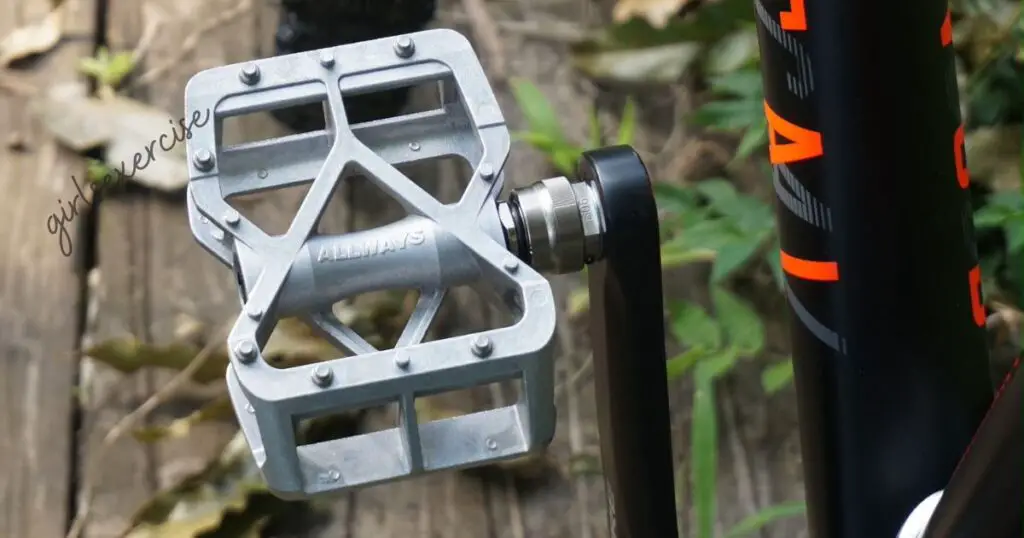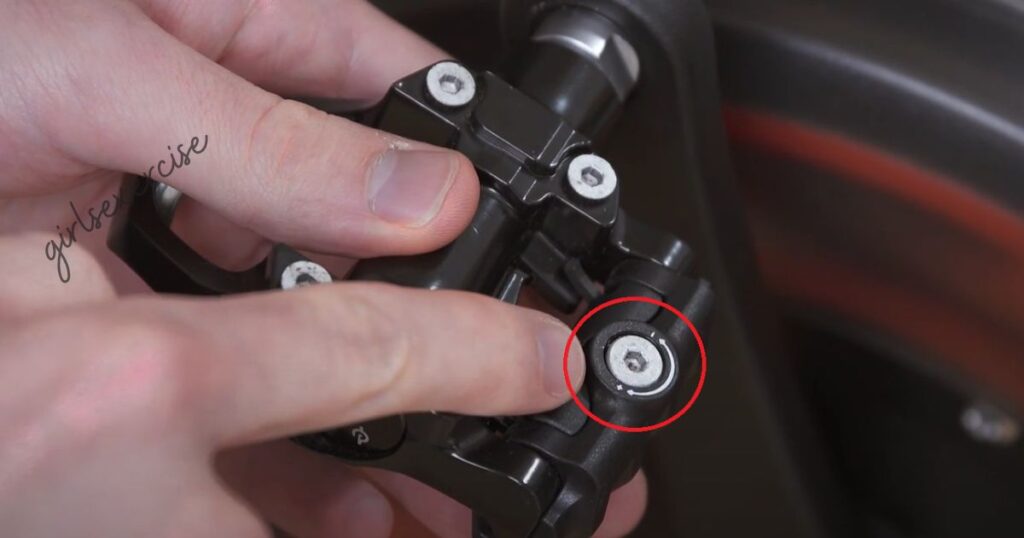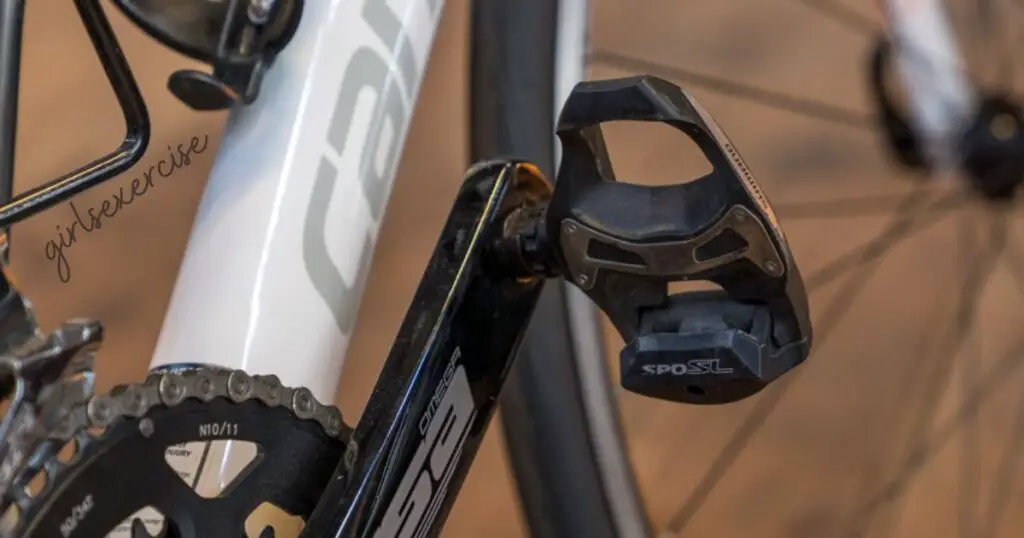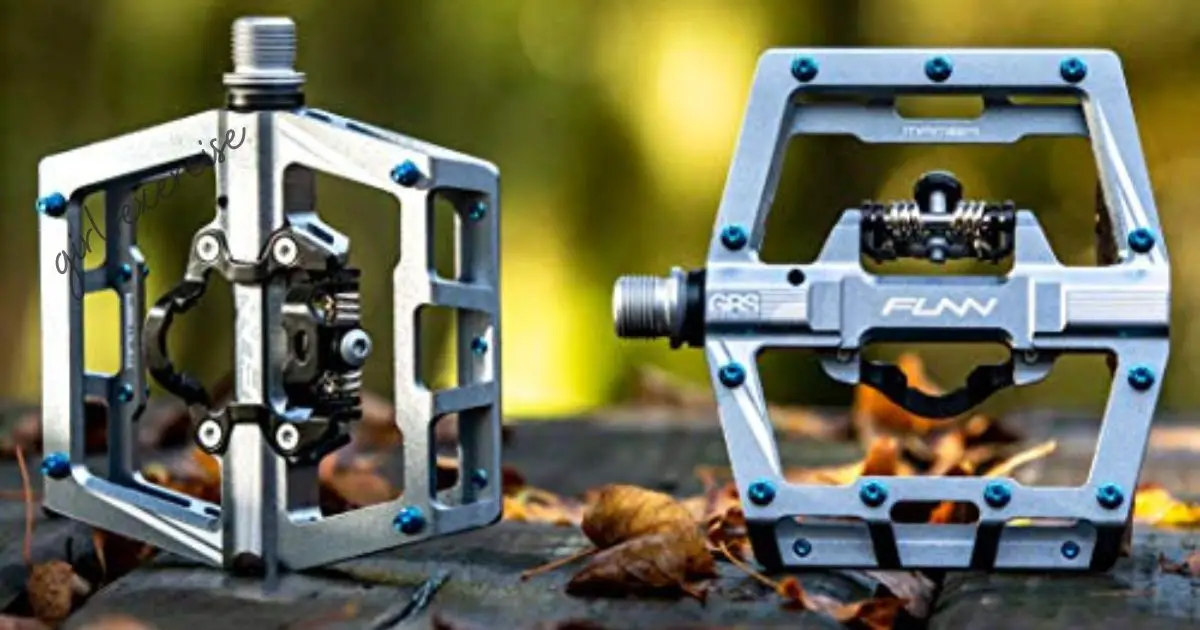Clip-in pedal Troubleshooting, also known as clipless pedals, is a ubiquitous component in the world of cycling. These pedals are a cyclist’s connection to their bike, providing stability and control while allowing for efficient power transfer. They feature a unique mechanism that secures the cyclist’s cycling shoes to the pedal, creating a solid link between the rider and the bike. Understanding the intricacies of how these pedals work is fundamental to their effective use and troubleshooting.
Whether you’re a seasoned cyclist or a beginner, comprehending the mechanics of clip-in pedals is crucial. Delving into the specifics, such as the various types of clip-in pedal systems and their advantages, will empower you to make informed choices about your cycling gear.
The Importance of Troubleshooting

Troubleshooting clip-in pedals is a vital skill for any serious cyclist. The smooth operation of these pedals directly impacts your biking experience, from pedal engagement to power transfer. In the world of cycling, even minor issues can lead to discomfort, reduced performance, and even safety concerns.
This article explores the reasons why troubleshooting your clip-in pedals is so important. It addresses the benefits of preventive maintenance, the cost-effectiveness of DIY repairs, and the confidence that comes with self-sufficiency. By understanding how to troubleshoot common pedal problems, you’ll ensure that your cycling adventures remain enjoyable, efficient, and hassle-free. So, let’s embark on a journey into the world of clip-in pedal troubleshooting and discover how to keep your pedals spinning smoothly.
Proper Gear and Protection
When delving into the world of clip-in pedal troubleshooting, safety should be your top priority. Begin with the right gear – make sure you’re equipped with a well-fitted helmet, cycling gloves, and appropriate clothing. Investing in quality cycling shoes that match your clip-in pedal system is paramount. These shoes offer the necessary support and connection for optimal performance while minimizing the risk of accidents.
Gloves not only provide a better grip but also protect your hands in case of a fall. Padded shorts ensure comfort during long rides. These clothing choices are not just about style but about safeguarding yourself on the road.
Checking the Pedals
Before you embark on your cycling adventure, inspect your clip-in pedals diligently. Ensure they are securely fastened to your bike. Loose pedals can result in hazardous accidents. Moreover, assess the pedal’s surface for wear and tear. A smooth, well-maintained pedal ensures a secure connection with your cycling shoes, preventing unexpected disengagement.
A quick check of your pedal’s condition before every ride can make a world of difference in your safety and overall biking experience. Safety begins with being proactive and vigilant, so never underestimate the importance of these precautions.
Difficulty Engaging and Disengaging
Stiff Clips:
Stiff clips can turn your biking experience into a frustrating ordeal. When your clips are unyielding, clipping in and out becomes a struggle, affecting your overall control and efficiency. To address this issue, you’ll need to assess the cleats and pedals. Lubrication is often the solution; applying a specialized lubricant to the pedal springs can significantly ease clip engagement.
Worn Cleats:
Worn cleats are a common culprit for difficulty in engaging and disengaging from clip-in pedals. Over time, the contact points on the cleats may wear down, reducing the effectiveness of the pedal-cleat connection. To combat this issue, consider replacing your cleats. It’s essential to inspect cleats regularly and swap them out when they show signs of deterioration.
Loose Tension:
Loose tension on your clip-in pedals can lead to accidental disengagement, potentially causing accidents. This issue may arise due to prolonged use or overuse of the pedals. Tension adjustment is the key to resolving this problem. Familiarize yourself with your pedal’s tension adjustment mechanism and fine-tune it according to your preferences.
Noisy Pedals
Squeaking:
Squeaking pedals can be both annoying and concerning. The primary cause of squeaky clip-in pedals is friction between the cleat and the pedal surface. To eliminate the squeaking, proper lubrication is vital. Apply a suitable lubricant to the contact points where the cleat engages the pedal. Regular maintenance can ensure your rides remain silent and peaceful.
Clicking:
Clicking noises while cycling can be quite unsettling. These sounds often emanate from loose pedal components or wear and tear. Investigate the source of the clicking and tighten any loose parts, such as bolts or screws. If the clicking persists, it may be a sign of more significant issues, and professional intervention may be necessary.
Uneven Wear:

Identifying Problems:
Recognizing uneven wear patterns on your pedal or cleats is crucial for maintaining optimal performance. Inspect your pedal components regularly for signs of irregular wear, such as grooves or excessive wear on one side. Uneven wear may lead to reduced stability and discomfort while riding.
Potential Causes:
Uneven wear can be attributed to factors like improper foot alignment or pedal adjustment. Addressing this problem requires realigning your cleats and ensuring your pedal is set up correctly. Failure to rectify uneven wear can result in decreased pedal efficiency and may lead to more serious complications down the road. It’s essential to address this issue promptly to prolong the lifespan of your clip-in pedals and enjoy a smoother, safer ride.
Essential Tools

In the world of clip-in pedal troubleshooting, equipping yourself with the right tools is your first step toward pedal perfection. These essential tools are the cornerstones of any cyclist’s maintenance kit:
Allen Wrench Set:
These versatile wrenches, available in various sizes, are your trusty companions for most pedal-related adjustments. With their power to tighten or loosen bolts and screws, they grant you the precision needed to fine-tune your pedals effortlessly.
Lubricant:
A top-notch, pedal-specific lubricant is your secret weapon against issues like stiff clips and noisy pedals. By keeping your pedal components well-lubricated, you ensure a silky-smooth cycling experience while warding off premature wear and tear.
Screwdriver Set:
Don’t underestimate the might of a comprehensive set of screwdrivers. With their diverse tips, they become your go-to tools for tweaking and securing pedal components. They’re particularly handy when it comes to fine-tuning tension settings, optimizing your pedal engagement.
Pedal Wrench:
This specialized tool is the key to effortless pedal removal and installation. Designed with a lengthy handle for extra leverage, it’s your trusted companion for swiftly switching out your pedals without breaking a sweat.
Cleat Alignment Tool:
Achieving perfect cleat alignment is a game-changer in your cycling journey. This tool ensures that your cleats are in harmony with your cycling shoes, enhancing both comfort and performance while minimizing the risk of knee and foot discomfort.
Optional Tools for Advanced Troubleshooting

For those cyclists eager to delve deeper into pedal troubleshooting or tackle more intricate issues, these optional tools elevate your pedal maintenance game:
Torque Wrench:
The torque wrench adds precision and consistency to your pedal bolt-tightening process. It minimizes the risk of over-tightening, safeguarding your pedal components from potential damage.
Pedal Spindle Grease Gun:
When dealing with bothersome issues like pedal play or spindle maintenance, the pedal spindle grease gun comes to the rescue. Its lubricating prowess ensures your pedals rotate smoothly, enhancing your ride quality.
Cleat Shims:
Cleat shims are essential when seeking the nirvana of perfect cleat positioning. They’re especially valuable if you have unique foot alignment needs, allowing you to fine-tune the pedal-cleat interface for supreme comfort and peak performance.
Pedal Bearing Press:
For the pedal aficionados interested in advanced maintenance, the pedal bearing press is a must. It facilitates the disassembly and servicing of pedal bearings, extending the lifespan of your pedals and ensuring seamless rotation.
While the essential tools are the foundation of your routine pedal maintenance, these optional tools are your ticket to a higher level of control and precision. With these tools in your arsenal, you’ll be well-prepared to tackle a wide array of pedal-related issues, ensuring a safe, smooth, and efficient cycling experience.
Step 1: Cleaning and Lubricating
Choosing the Right Lubricant:
Selecting the proper lubricant is a critical decision. We explore different types, from dry to wet lubes, and guide you on picking the one best suited to your riding conditions, ensuring optimal performance.
Proper Cleaning Techniques:
Learn the art of effective pedal cleaning. Discover the step-by-step process to remove dirt, grime, and old lubricants from your pedal components, guaranteeing a fresh start for your cycling adventure.
Step 2: Adjusting Clip Tension
Increasing or Decreasing Tension:
Adjusting clip tension can transform your riding experience. We provide insights on when to tighten or loosen, allowing you to customize your pedal engagement for comfort and efficiency.
Testing the Adjustment:
Master the technique of testing your clip tension adjustments. We walk you through practical methods to ensure that your pedals respond to your preferences seamlessly, enhancing your ride.
Step 3: Replacing Cleats
Signs of Worn Cleats:
Recognize the telltale signs of cleat wear, from diminished grip to uneven engagement. We show you how to identify when it’s time to replace your cleats for a safer and smoother ride.
Cleat Replacement Process:
Delve into the cleat replacement process with our step-by-step guide. We demystify the task, making it accessible to cyclists of all levels, allowing you to restore that strong pedal-cleat connection.
Step 4: Diagnosing Noises
Squeaking Solutions:
Squeaky pedals no more! Discover the sources of squeaking sounds and explore effective solutions to silence your ride, ensuring a peaceful and distraction-free cycling experience.
Addressing Clicking Sounds:
Clicking noises can be perplexing. Unravel the mystery behind these sounds and learn how to address them, preventing potential issues and enjoying a quieter ride.
Step 5: Even Pedal Wear
Preventing Uneven Wear:
Understand the causes of uneven pedal wear and proactively prevent it. We share expert tips on how to maintain a balanced pedal surface, ensuring stability and longevity.
Correcting Issues:
In the event of uneven wear, we guide you through the corrective measures needed. Learn how to restore your pedals to their optimal condition, enhancing your riding performance and comfort.
Dealing with Bent Spindles

When it comes to advanced pedal troubleshooting, dealing with bent spindles is a challenging task. A bent spindle can wreak havoc on your cycling experience, causing instability, discomfort, and potential safety hazards. We explore the causes of bent spindles, such as impacts and excessive force, and provide a comprehensive guide on how to identify and rectify this issue. Whether it’s straightening a bent spindle or opting for a replacement, we offer expert advice to ensure your pedals are in top-notch condition, allowing you to cycle confidently and smoothly.
Fixing Play in the Pedal
Play or looseness in the pedal can be a frustrating issue, affecting your control and power transfer. We delve into the underlying causes of pedal play, including worn bearings and spindle damage, and detail the steps to address it. From disassembly and inspection to bearing replacement, our guide equips you with the knowledge and skills required to tackle this advanced pedal problem. By eliminating play in your pedals, you regain stability and precision, ensuring a safer and more efficient cycling experience.
Addressing Severe Damage
Severe damage to your clip-in pedals can be a daunting challenge. Whether it’s cracked pedal bodies, shattered components, or structural issues, we guide you through the evaluation and decision-making process. We help you determine whether it’s possible to salvage the pedals or if a replacement is the best course of action. Understanding how to address severe damage is crucial for maintaining safety and ride quality. We provide insights and recommendations on professional repairs and DIY solutions, empowering you to make informed choices and keep your cycling adventures in motion.
Regular Inspection
Regularly inspecting your clip-in pedals is a vital practice in the realm of cycling maintenance. It’s the foundation of keeping your pedals in top-notch condition. We delve into the art of a thorough inspection, guiding you through the process of checking for issues such as loose components, signs of wear, and potential damage. By making regular inspection a habit, you can catch and address problems early, preventing more significant issues down the road and ensuring your rides are consistently smooth and safe.
Cleaning and Lubrication Schedule
Maintaining pedal performance extends beyond the surface. We introduce you to the concept of a cleaning and lubrication schedule, outlining when and how to clean and lubricate your pedals. Proper cleaning removes dirt and grime that can affect performance, while lubrication ensures smooth operation and longevity. We provide a detailed schedule that suits your riding style and conditions, allowing you to maximize the life and efficiency of your pedals.
Replacing Parts as Needed
Over time, pedal components may wear out or become damaged. Knowing when and how to replace these parts is key to sustaining optimal pedal performance. We guide you through identifying worn or damaged components, whether it’s cleats, bearings, or pedal bodies, and offer recommendations for sourcing quality replacement parts. By understanding the importance of replacing parts as needed, you can breathe new life into your pedals, enhancing your cycling experience and safety while prolonging their lifespan.
Proper Technique
Mastering the art of proper clip-in pedal technique is fundamental to a seamless cycling experience. We provide a comprehensive breakdown of the correct way to engage and disengage your pedals, ensuring a secure connection with each stroke. Exploring the nuances of timing and motion, we help you develop the muscle memory needed for smooth, efficient transitions. By perfecting your technique, you minimize the risk of mishaps and enjoy a ride characterized by control, power, and confidence.
Foot Positioning
Your foot positioning on the pedals can significantly impact your comfort and performance. We delve into the intricacies of pedal ergonomics, guiding you on finding the optimal foot alignment. Whether it’s adjusting cleat placement or pedal angle, we share insights on how to customize your setup to match your unique physiology and preferences. By fine-tuning your foot positioning, you can reduce discomfort, enhance power transfer, and create a connection between you and your bike that feels like an extension of yourself.
Gradual Adjustments
Making adjustments to your clip-in pedals may be necessary to tailor them to your evolving needs. We emphasize the importance of gradual changes and careful observation. Whether it’s tweaking tension, alignment, or other settings, we discuss the benefits of incremental modifications and the patience required for optimal results. By adopting a philosophy of gradual adjustments, you gain greater control over your pedal performance, ensuring that every ride is a harmonious experience, fine-tuned to your preferences.
Brand-Specific Considerations
Clip-in pedal troubleshooting isn’t a one-size-fits-all endeavor, and the pedals you use may vary in design and mechanics based on the brand. We delve into the intricacies of brand-specific considerations, offering insights into the unique features and characteristics that different manufacturers incorporate into their pedals. Understanding these variations is crucial, as each brand may have its own methods for adjustment, maintenance, and addressing common issues.
Whether you’re working with Shimano, Look, Time, or any other brand, we explore the distinct nuances of their pedal systems. From tension adjustment mechanisms to cleat compatibility, our guide ensures you’re well-prepared to handle troubleshooting for your specific brand of pedals. By appreciating these brand-specific details, you can tailor your maintenance and repair efforts precisely to your equipment.
User Manuals and Resources
User manuals and manufacturer-provided Are often overlooked but can be invaluable in the realm of clip-in pedal troubleshooting. We emphasize the importance of utilizing the materials provided by the brand, such as user manuals, online guides, and customer support. These documents contain expert insights into your pedals’ operation, maintenance, and troubleshooting procedures.
We guide you on how to access and effectively use these, ensuring that you have a comprehensive understanding of your specific pedal system. By leveraging the manufacturer’s guidance, you can navigate troubleshooting with confidence, saving time and effort while preserving the integrity of your pedal components. Whether you’re a seasoned cyclist or a novice, the user manuals and Provided by the brand are indispensable tools for successful pedal maintenance.
Complex Issues
While DIY troubleshooting is rewarding, there are moments when complexity presents itself. We discuss the scenarios where the issues at hand surpass your technical expertise. Complex problems, such as spindle damage, intricate bearing issues, or severe structural damage, may require professional intervention. We elaborate on recognizing these situations, ensuring that you don’t exacerbate problems through well-intentioned but potentially detrimental DIY attempts.
Safety Concerns
Your safety is paramount in the world of cycling. We underline the importance of prioritizing your well-being when faced with pedal-related concerns that could compromise your security. If you encounter issues like sudden pedal disengagement, persistent noises, or unexplained wobbling, we recommend seeking professional assistance. These safety concerns are not to be taken lightly, and professional help can swiftly address the root causes, minimizing the risk of accidents and injury. We provide guidance on how to identify these red flags and emphasize that putting your safety first is a responsible and wise choice, ensuring that you can continue to enjoy your cycling adventures with confidence.
Conclusion:
Clip-in pedal troubleshooting is an essential skill for cyclists to ensure a smooth and safe riding experience. Whether you’re dealing with issues like squeaking pedals, difficulty engaging and disengaging, or uneven wear, understanding the troubleshooting techniques and tools required can save you from unnecessary frustration and enhance your performance on the road.
FAQs About Clip-in pedal troubleshooting
Why are my clip-in pedals suddenly squeaking during rides?
Squeaking pedals can be due to various factors, such as a lack of lubrication, dirt buildup, or worn cleats. To fix this issue, start by cleaning your pedals thoroughly, and then apply a suitable pedal-specific lubricant to the contact points. If the squeaking persists, consider replacing worn cleats for a quieter ride.
How can I prevent accidental disengagement with clip-in pedals?
To prevent accidental disengagement, make sure your cleats and pedals are clean and well-lubricated. Also, check your pedal tension settings to ensure they’re appropriate for your riding style. Maintaining proper cleat alignment and replacing worn components can significantly reduce the risk of unexpected disengagement.
What should I do if my clip-in pedals have uneven wear?
Uneven pedal wear is often caused by improper foot alignment or pedal adjustments. To correct this, realign your cleats to ensure they are positioned correctly. Regularly inspect and maintain your pedals, addressing any wear issues promptly. Proper foot positioning and maintenance can help mitigate uneven wear.
My clip-in pedal tension is too high, making it challenging to engage and disengage. What should I do?
High pedal tension can be adjusted to your preference. Refer to your pedal’s user manual or manufacturer’s instructions to locate the tension adjustment mechanism. Gradually reduce the tension to a level that suits your comfort while maintaining a secure connection. Remember to test the adjustment to ensure it’s to your liking.
Can I use the same troubleshooting techniques for different clip-in pedal brands?
While basic troubleshooting principles apply across brands, there are brand-specific considerations. Each manufacturer may have unique mechanisms and features in their pedal systems. Consult the user manual Provided by your pedal’s brand for brand-specific troubleshooting instructions and maintenance tips.
How often should I clean and lubricate my clip-in pedals for optimal performance?
The frequency of cleaning and lubrication depends on your riding conditions. For regular use, a monthly cleaning and lubrication routine is generally sufficient. In harsh conditions, like wet or muddy terrain, more frequent maintenance may be necessary. Always inspect your pedals before each ride and address any visible dirt or wear promptly.
When should I seek professional help for clip-in pedal troubleshooting?
You should consider professional assistance for complex issues, such as severe spindle damage, intricate bearing problems, or structural damage. If you have safety concerns, like unexplained pedal disengagement, persistent noises, or wobbling, it’s advisable to consult a professional to ensure your pedals are in optimal working condition and safe for use. Your safety should always be a top priority.




The future of commuting lies in ebikes, marking a paradigm shift towards sustainable and adaptable modes of travel. Our comprehensive selection boasts top-rated ebikes, including pedal-assisted mountain bikes and versatile fat tire ebikes, designed to accommodate riders’ preferences across various terrains and riding conditions.